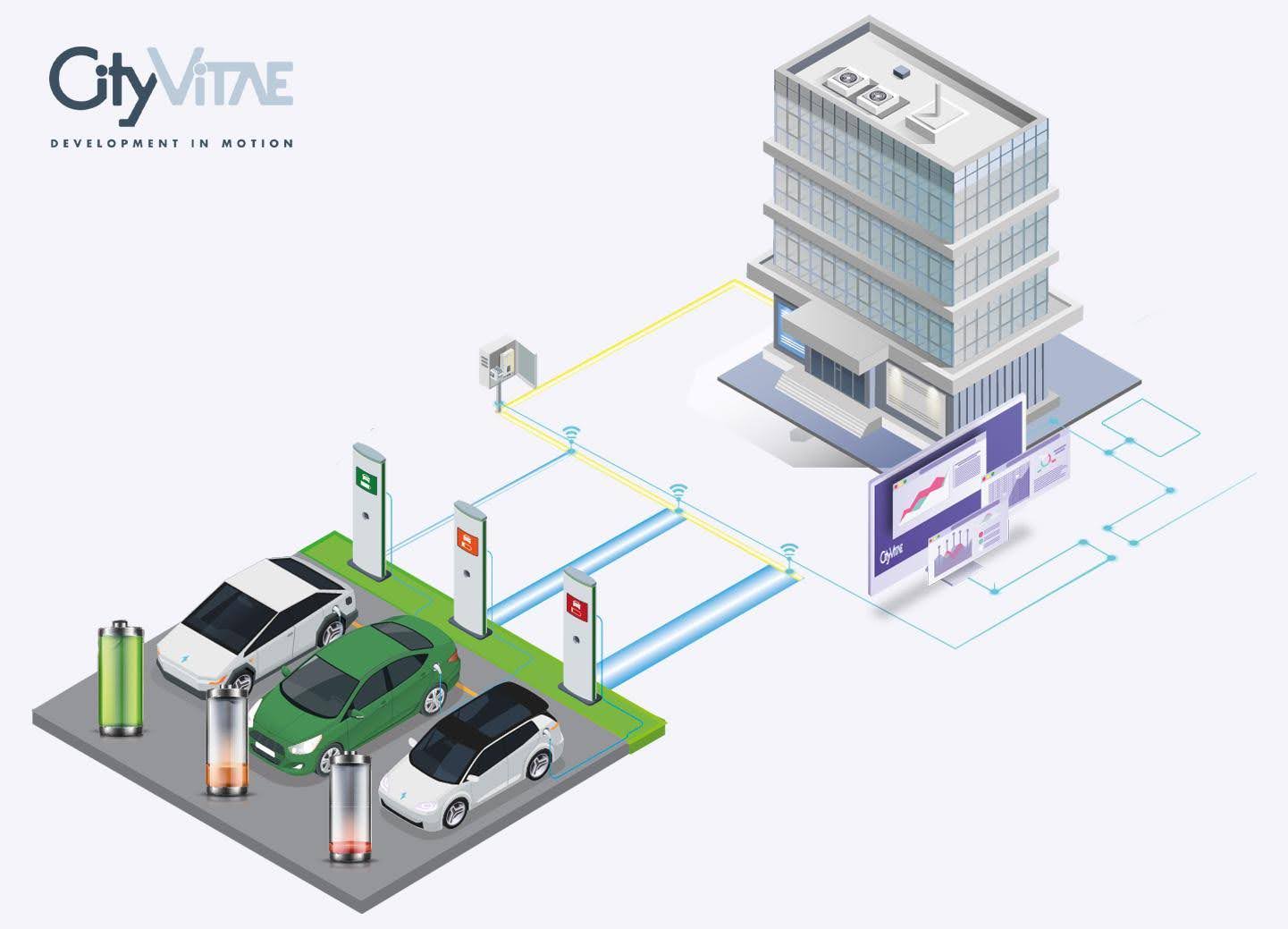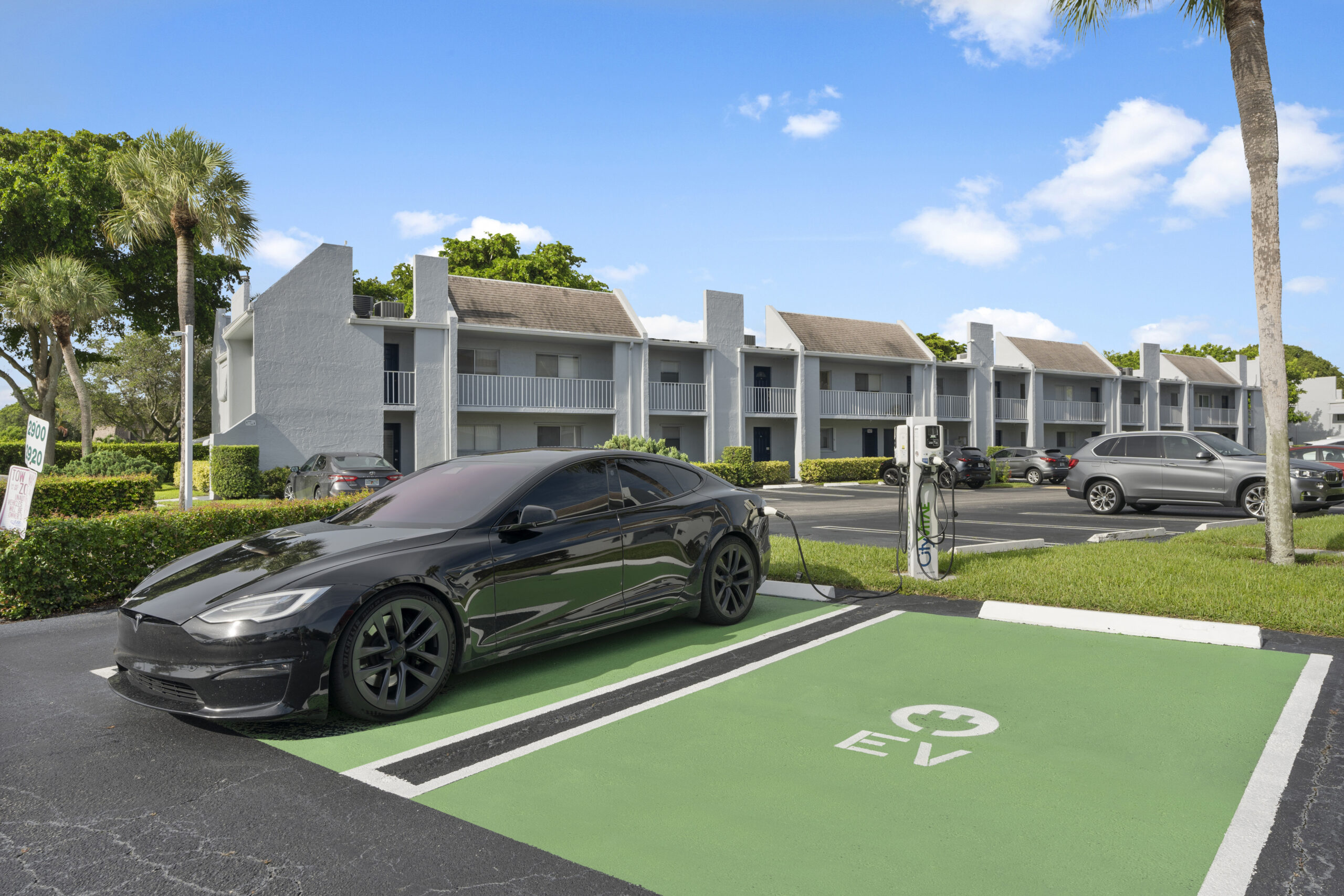Many have focused on how electric power consumption will grow with the emergence of electromobility. However, unlike pocket gadgets, our future vehicles can be, besides being a burden for the system, a great help and, why not, a good deal.
September 16th, 2019
When we think of a car parking lot, we think of square meters of sterile use that spreads throughout the city or take the basements with the sole purpose of housing the vehicles that will wait for hours, days and even months to return to the Arena. On the other hand, when we think about the minibus terminal, we think of a deserted place by day and a roar of engines silenced at night commonly on the outskirts of the city.
With the emergence of electromobility that image could change. The replacement of internal combustion vehicles with electric vehicles prevents our eyes to see that we are not only in the presence of a means of transport but that we have in front rolling “battery banks” that will be parked a few hours a day. This will consequently change our parking perception.
Taking into account that our vehicles, now rolling batteries, also communicate with the chargers and these, in turn, can communicate with other chargers of the building, since these chargers are electrically connected to the network, we have as a result an extensive bank of batteries that will not stop growing during the next decades.
The V2X raises the challenge of how to handle the technological, legal, regulatory and geographical variables to make available a part of the energy stored in our vehicles, at the service of the electric grid or other devices.
The benefits of V2X can be concrete for stakeholders ranging from partnerships of private car owners to companies with large fleets. In electrical systems that tend to automation, charging points could have available in real-time the residual energy of the vehicles after their operating time. And what makes it even more interesting is that such energy would be available at rush hour or to cope with emergencies depending on the size of this “battery bank” spread throughout the city.
So it’s easy to ask: What will be the real benefit of selling energy to the same entity that sold it to me and will probably pay me less for it? Will it be worth giving more use to batteries than just that of setting me in motion? Due to the size of our market, we cannot answer this question for sure, but the following points will be key:
Hourly pricing: it is unavoidable to see electric vehicles as another gadget and, like our cell phones, we can charge them at night and even schedule their charge for the hours of lower consumption in the country. Therefore, under a good hourly rate, it would be possible to buy energy in the hours in which its cost is lower.
The following image explains in a simplified way the schedules of regulated flexible rates of the city of Santiago and compares them with the cycle of use of a private transport vehicle. It is clear that there is a time when the energy of the vehicles could be useful in the system, directly as energy, as complementary services or simply providing some kWh to cope with home power “cuts off”.
To be significant, this model will require studying the scale, it will also require cars with V2X technology, batteries that allow this cycle without early reducing its useful life and of course a regulation that allows this technology.

Microgrids: the energy that is bought and stored from the “big network” could be sold to the nearest surroundings at a competitive price during times of greatest demand.
The Microgrids are networks of energy consumption that for physical or economic reasons can be separated from the Macrogrid, for which it is necessary to have their own energy sources and, as far as possible, their own efficient low carbon sources. As they are small-scale networks, they have the challenge of balance control, voltage control, and service recovery; these complementary services could be assumed at a certain degree by the electric vehicles which are part of it.

Virtual power station: unity creates strength and if the amount of energy available from our vehicles grows to the same degree as the growth of the vehicle market, together with a shared communication protocol, we will be in the presence of a new distributed generation plant, a virtual power plant based on “batteries with wheels”.
The virtual power plant concept stems from the agglomeration of distributed generators, controllable charges, and energy storage systems, being these systems coordinated and controlled by a single management system;
Thanks to that coordination through precise communication of many energy points, it is possible to emulate the operation of a conventional power plant and it is there where electric vehicles have much to contribute.
When we talk about V2X we also talk about the communication capacity that electric vehicles and their chargers have. This characteristic included “by default” means that their incorporation into virtual power plants does not require the transformation that is necessary for other sources and charges, so the storage of our vehicles’ batteries can help increase the flexibility and efficiency of the system.

We will seek to develop these concepts, together with the experience of other places where electromobility has a higher penetration rate and V2X has been successfully tested.
And we will do it in such a way to generate in Chile the most adequate business models and partnerships. All this, together with heterogeneous experienced professionals as students and professors will shape the Degree in Electromobility: Technology, Public Policies and Business Models of the University of Santiago.
Claudio Martínez, rapporteur of the USACH Electric Mobility Program.





